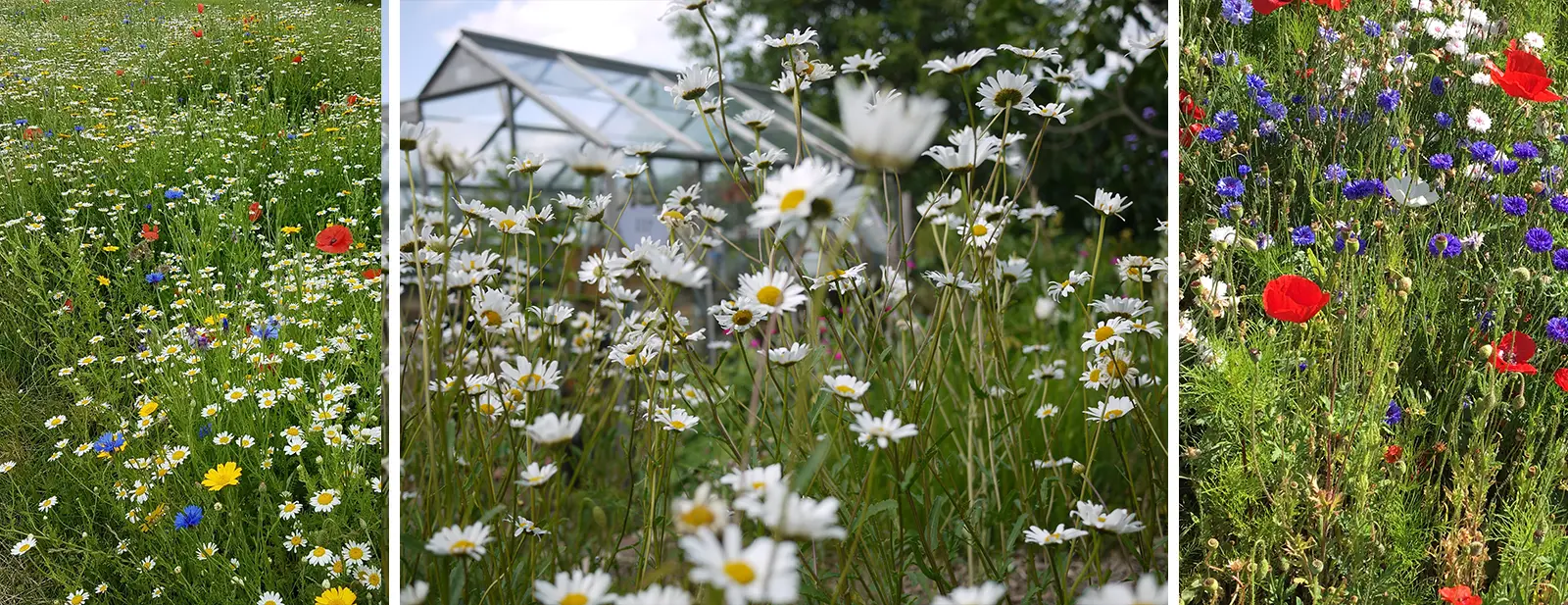Gardener’s Secret To Success
As Summer’s vivid colours begin to transition to the rich, warm tones of Autumn, there’s a wildflower gardening secret that often goes unnoticed: in the UK, Autumn is the perfect time to sow wildflowers. Ana, cofounder of the disruptive wildflower company, Seedball, tells us why.
In the UK, Autumn typically begins to make its presence felt from the end of August into September. This is when you’ll notice a gradual cooling of temperature and increased moisture in the air as the days become shorter, the season is shifting, even as summer lingers on the calendar.
While many of us think to Spring as the season for planting, nature herself does otherwise. British native wildflowers naturally release their seeds in Autumn, following a cycle that has evolved to match our climate over millennia.
Top Five Reasons To Choose Autumn
It’s in Harmony with Nature
In the wild, native wildflowers drop their seeds by Autumn. This natural process ensures that seeds lie dormant over the winter months, ready to burst into life at the perfect time to welcome Spring. By scattering your seeds or seed balls in autumn, you’re mimicking this time-tested cycle, often resulting in higher germination rates. You’re essentially letting nature take the lead, giving your seeds the best possible chance to thrive.
Reduced Competition for Resources
A lesser-known benefit of Autumn planting is reduced competition from weeds. As the cooler temperatures set in, annual weeds begin to die off, and perennial weeds enter a state of dormancy. This means your wildflower seeds will have less competition for vital resources like sunlight, water, and nutrients. With fewer weeds to contend with, your wildflowers can establish themselves more easily and grow more robustly.
Optimal Weather Conditions
Autumn has the perfect weather conditions for seed germination. It’s a season that’s neither too hot nor too cold, with increased rainfall and higher humidity levels. These conditions create an ideal environment for seeds to settle into the soil and begin the process of germination. The cooler temperatures also reduce the stress on young seedlings, giving them a better chance to establish themselves before winter.
Stronger Root Systems
When you sow wildflower seeds in Autumn, you give them a head start in developing a strong root system. Throughout the Winter, their roots will continue to grow, even if the plants above ground appear dormant. By the time Summer arrives, your wildflowers will have deeper roots that are better equipped to withstand the drier conditions. This resilience means your garden will be more likely to thrive, even during periods of drought.
Cold Stratification for Better Germination
Some wildflower seeds need a period of cold to break dormancy, trigger germination and help crack open the hard outer casing of the seed. This natural process occurs when seeds are exposed to cold, moist conditions over the winter months. By scattering your seeds in Autumn, you ensure they undergo this essential process, leading to a higher success rate when Spring arrives.
How to Get Started
For the best results, scatter fresh wildflower seeds or seed balls onto a prepared seedbed, lightly rake the soil to help the seeds settle in, and then simply let nature do the rest. Come Spring, you’ll be rewarded with a firework display of colour and a garden buzzing with life.
Autumn is more than just a beautiful season; it’s the perfect time to begin a thriving wildflower garden, ensuring a stunning display next year, supporting local wildlife and promoting biodiversity. So this Autumn, embrace nature’s rhythm and scatter your seeds alongside Mother Nature.
Happy scattering!
Ana Attlee – Cofounder Seedball Ltd
Receive 20% OFF across the Seedball website with code: WILDFLOWER20

